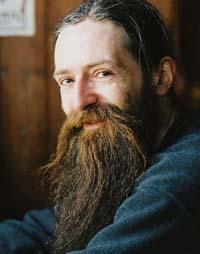Recipe to extend life?
2006/11/01 Agirre Ruiz de Arkaute, Aitziber - Elhuyar Zientzia Iturria: Elhuyar aldizkaria
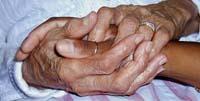
This shows that living beings spend a lot of energy and resources to reproduce, but not so much to maintain the body. We have mechanisms to solve these damages throughout life, but they are not as elaborate as reproductive strategies.
In some species the reproduction takes to the extreme: the only task that the male has is to produce seed. It lives stuck in the skin of the female as a parasite, since it is not able to feed itself. This shows that the ultimate goal of living beings is reproduction, after which we have finished our task. And without a defined mechanism of bodily maintenance, small damages accumulate as a result of life. But, however, they are not significant from the evolutionary point of view, since animals die in nature long before for these defects, hungry or killed by a predator.
However, in the present life of the human being there are fewer and fewer effects of famines, diseases and attacks of enemies that have now become a milestone in the quality of life.
The British Aubrey de Grey has based his theory on these bodily errors. He is a computer scientist himself, but has spent years researching biosciences at the University of Cambridge. A few months ago he surprised the scientific community with a plan to recover human aging. He has not proposed a magical solution that makes us immortal, but a deep maintenance of the body that we will have to renew every several years. It seems enough to prolong life hundreds of years.
De Grey has identified the top 7 “droppers” that older people suffer and has proposed 7 components for their personal cocktail that will be their solution.
1: stem cells
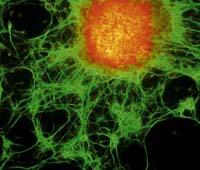
It is first fixed on old cells. He says that as cells age they die in organs, and that there are no new alternative cells that take their place. In the heart, sometimes the vacuum is filled with the increase of the surrounding cells, but in other organs the vacuum is not covered. Muscles, for example, lose their contraction capacity so they lose their contraction ability.
Cellular dubbing can be resurrected naturally: sport increases muscles by increasing cells, but other tissues barely recover. You can also act artificially using growth factors. They have seen that it works well in one of the organs of the immune system, the thymus, but in general these stimuli have a limit and De Grey has stated that the most effective strategy will be the use of stem cells.
From here to 10 years aims to extend the life of man, but is not stem cell research too young? Despite the great possibilities it offers in the future, it seems incredible that in the short term we are able to replace all types of cells in the body.
2: cell suicide
Another problem for older people is that obsolete cells build up instead of dying, where they don't need to. In the cartilage of the joints, for example. Even when age begins to lose muscle mass, fat cells are replacing muscle. The appearance of visceral fat, which accumulates in the abdominal cavities, is even more dangerous, as it produces a loss of responsiveness adequate to food from the stomach. Development of insulin resistance and consequent diabetes.
Immune system cells become dysfunctional as they age. De Grey looks for a miraculous product that removes all these obsolete cells: it designs a drug that will cause cell suicide. It is not little!
3: telomere control
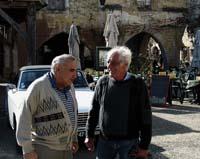
Cancer cells acquire an unlimited and uncontrolled fragmentation capacity and become dangerous. According to experts there may be telomeres behind. These structures protect the end of chromosomes from degradation, but they are shortened each time the cell divides and, after several divisions, the wear of the telomere leaves the chromosome unprotected. This causes errors in the duplication of these chromosomes and cell death. The life of cells is limited.
In cancer cells, however, experts have seen enzymes --telomers- that stretch telomeres again and allow cells to break them without limits. Therefore, just in case, de Grey proposes to eliminate the genes that cause the stretching of telomeres to all the cells of the body. Thus, if someone becomes a cancer cell, it would be possible to limit the number of partitions and stop the cancer itself. According to De Grey, the stem cells of newborn children themselves have a telomere reserve that allows them to divide 10 years normally and survive. Thus, it proposes to repopulate every 10 years the body with stem cells with inhibited telomerase.
This argument has several problems. First, it seems that this telomere stretching system has other basic functions in stem cells. This can pose a risk of inhibition as indicated by Grey. In addition, only 10% of cancers have active telomere stretching systems. What would happen to the remaining 90% even inhibited?
On the other hand, isn't it too much to rule out non-carcinogenic mutations? Will those thousands and thousands of mutations that have accumulated throughout our lives not harm the fundamental tasks for the functioning of our organs? What is aging if not that?
4: copy mitochondrial genes
Seeing how he rejects many mutations, it is surprising to see how Grey looks at mutations that occur expressly in mitochondria. All genes in the cell are stored in the nucleus, except those in the mitochondria. These are the only organelles with their own genes, and de Grey defends that their mutations must be prevented by their important function.
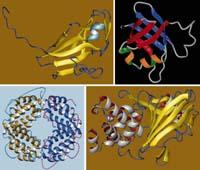
Imagine that cells are like a big city: the metro and cars from one side to the other, the lights everywhere, the workshops and the work on fire... and, outside the city, the power plants that support this whole movement. They are the mitochondria, the energy plants of our cells, which support all cellular metabolism. If the operation breaks, the cell ends, according to Grey. Therefore, it is especially important to take care of the mitochondria genes so that the mutations do not stop their functioning.
Since in mitochondria there are only 13 genes, Grey proposes to make copies of those 13 genes, incorporating them to the chromosomes of the nucleus, after the other genes of the cell. Thus, if a mitochondria gene is mutated and unused, the cell can use the kernel copy.
The problem with this 'repair' is that it has not yet been shown that the integrity of the mitochondrial genome actually conditions the life of the cell. Therefore, although Grey’s proposal was feasible, this would not ensure the paralysis of the aging process.
5: bacterial enzymes
Over time, Grey also sees the need to influence aging molecules. The cell has special systems to destroy molecules that have ceased to be functional: lysosomes. Put, digest, and expel the cells into the lysosomes. However, sometimes molecules have strange chemical variations that lysosomes cannot digest. Consequently, they accumulate forever within the lysosomes.
If the cell continues to fragment, there is no problem, divided between the children of the two cells, since this "junk" is "diluted", but in the cells that do not divide there are usually serious problems. For example in heart cells, back eye cells, and neuron motors. In this case, cells stop working and cause diseases such as arteriosclerosis, blindness or neurodegeneration, respectively.
The solution, according to De Grey, is the proliferation of enzymes that favor degradation, and states that bacteria and fungi that inhabit the soil have interesting enzymes for it. Their genes should be identified and integrated into people.
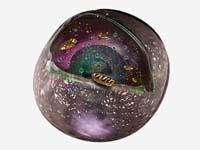
It is surprising, however, that Grey does not take into account that it will hardly regulate its activity. And the uncontrolled release of enzymes with that enormous capacity for destruction within our cells can produce disease and, why not, even death.
6: Collectors
The "junk" that accumulates inside the cells also accumulates outside them. -amyloid proteins, for example, do not degrade and create plaques in the brain of people with Alzheimer's disease. It seems -amyloid that are the cause of Alzheimer's, and Grey says that we should try to eliminate them. A pharmaceutical company has already developed a vaccine that stimulates the immune system and destroys this added material.
7: avoid dangerous relationships
-toxic amyloid accumulation does not mean that the presence of proteins outside the cell is rare. On the contrary, the extracellular matrix is full of proteins, and in it sees the last controversial point.
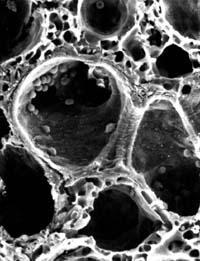
Intertwined, these proteins give each tissue its characteristic: elasticity of the walls of the arteries, transparency of the lens of the eye or resistance of bone ligaments. Problems begin when these proteins react with unnecessary proteins: the walls of the artery become rigid and blood pressure increases.
De Grey believes that if you want to delay old age it is necessary to break those unusual chemical bonds. Arids have very special chemical forms, so they are easily identifiable. It seems that a pharmaceutical company has already managed to lower blood pressure through such a treatment.
Immortal?
With this recipe, de Grey does not guarantee that we live forever. Whoever crosses the street without looking sideways always runs the risk of dying trapped by a car. Or we can die for some dangerous variant of the flu, since the infection does not prevent Grey's recipes.
But what is freed from them can easily approach the thousand years. In his opinion, the probability of young people living in wealthy and safe neighborhoods dying next year is only a thousand. If these conditions are maintained forever, therefore, the possibility of living a thousand years will be 50%, according to the bioinformatics.
